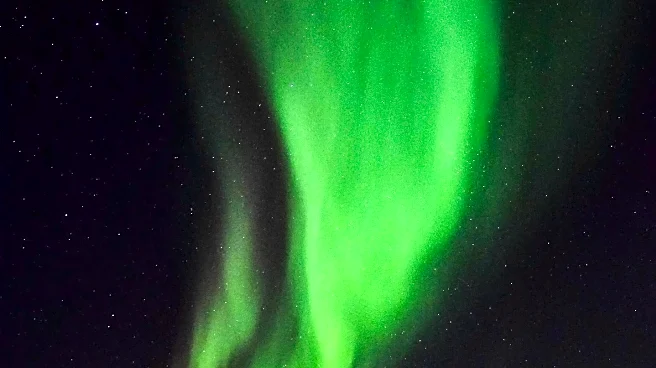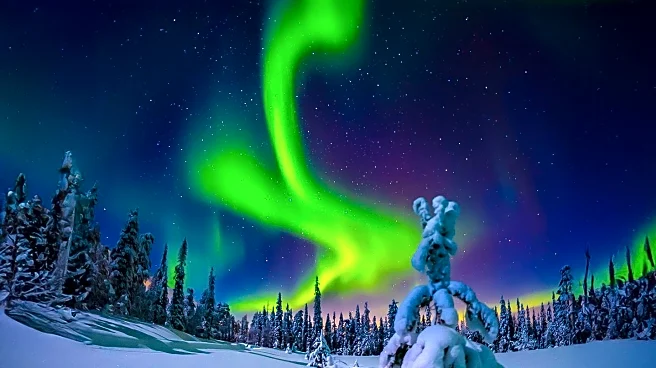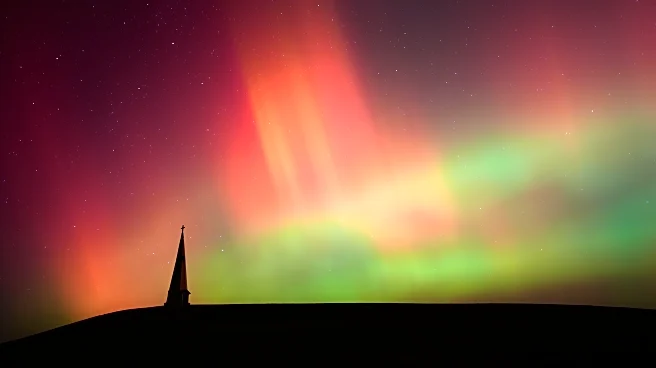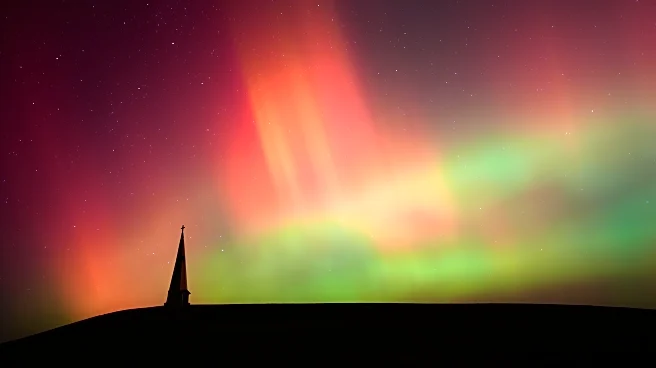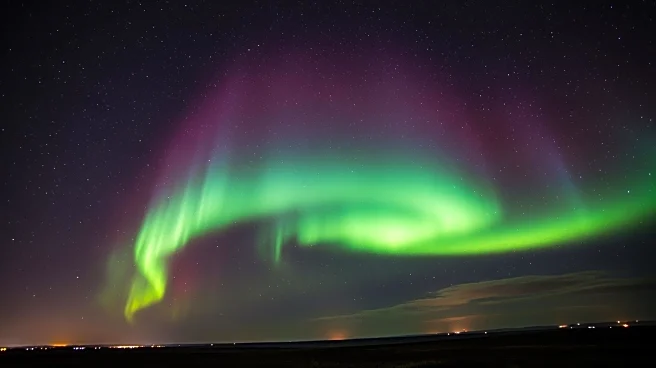What's Happening?
The aurora borealis, commonly known as the Northern Lights, provided a spectacular display across Colorado on Tuesday night. Residents from various parts of the state were able to witness the vibrant colors
of the aurora with the naked eye and through their smartphones. This rare occurrence was visible due to favorable atmospheric conditions, allowing the natural light show to be seen far from its usual polar locations. The event drew significant attention from locals who shared their experiences and images on social media, celebrating the unexpected visual treat.
Why It's Important?
The visibility of the Northern Lights in Colorado is significant as it highlights unusual atmospheric phenomena that can occur outside typical geographic boundaries. Such events can increase public interest in natural sciences and astronomy, encouraging educational pursuits and community engagement. Additionally, the widespread sharing of images and experiences on social media platforms can foster a sense of community and shared wonder among residents. This occurrence also underscores the importance of monitoring solar activity and its effects on Earth's atmosphere, which can have broader implications for understanding climate patterns and environmental changes.
What's Next?
While the Northern Lights are not expected to be a regular occurrence in Colorado, the event may prompt increased interest in future astronomical events and phenomena. Local educational institutions and science centers might capitalize on this interest by organizing workshops and talks about the science behind the aurora borealis and other atmospheric phenomena. Additionally, residents may be more inclined to follow solar activity forecasts to anticipate similar events in the future. The event could also inspire local photographers and artists to capture and interpret natural phenomena, contributing to cultural and artistic expressions within the community.
Beyond the Headlines
The appearance of the Northern Lights in Colorado may have deeper implications for understanding the interconnectedness of global atmospheric conditions. It serves as a reminder of the dynamic nature of Earth's environment and the influence of solar activity on terrestrial phenomena. This event could lead to increased research into the effects of solar storms and their potential impact on technology and communication systems. Furthermore, it highlights the importance of preserving natural landscapes that allow for unobstructed views of such phenomena, emphasizing the need for environmental conservation efforts.
